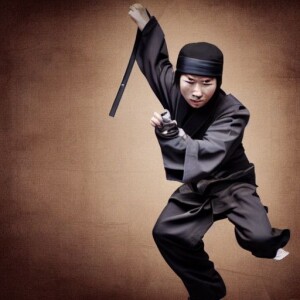During the feudal era in Japan, the emergence of the enigmatic and mysterious figure known as the ninja captured the attention of both historians and culture enthusiasts alike. These stealthy operatives, originating from the Japanese term “shinobi” meaning “one who is concealed,” held an undeniable allure of secrecy and intrigue. Their expertise extended across various fields, including espionage, sabotage, guerrilla warfare, and the sophisticated art of assassination.
Ninjas were not ordinary shadow warriors clad in black; they were highly skilled individuals who possessed exceptional physical prowess, strategic brilliance, and proficiency in handling a wide array of weaponry. Their ability to seamlessly blend into their surroundings by adapting their attire to suit the environment was truly remarkable, making them almost undetectable.
The training of ninjas encompassed a diverse spectrum of skills, with the elusive ninjutsu at its core. This encompassed combat techniques, the art of disguise, the finesse of stealth, and indispensable survival skills applicable in any given situation. However, their expertise extended far beyond physical combat. The ninja arsenal was a testament to their adaptability, incorporating psychological warfare tactics that consistently left adversaries bewildered and outmaneuvered.
In times of war, the value of ninjas was immeasurable. Their role as intelligence gatherers and executors of covert missions played a pivotal part in shaping the outcomes of battles. Throughout history, these extraordinary individuals have become symbols associated with stealth, agility, and unwavering resilience.
Even in the present day, tales of these exceptional warriors continue to captivate our collective imagination, immersing us in a realm of mystery and wonder. Exploring the world of ninjas provides a gateway to endless fascination, inspiring countless individuals with their tales of bravery and ingenuity.


